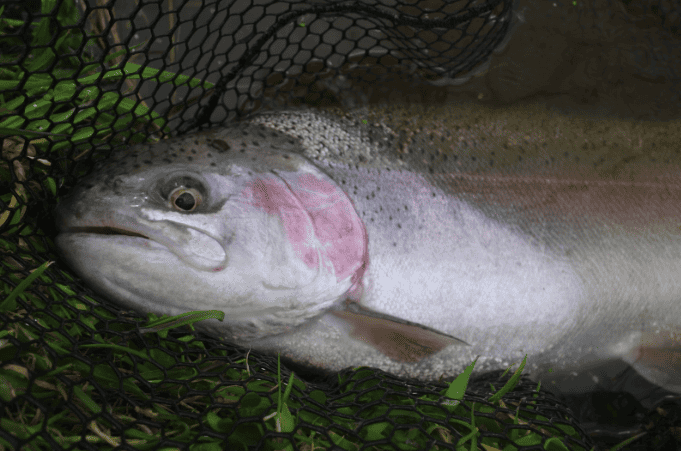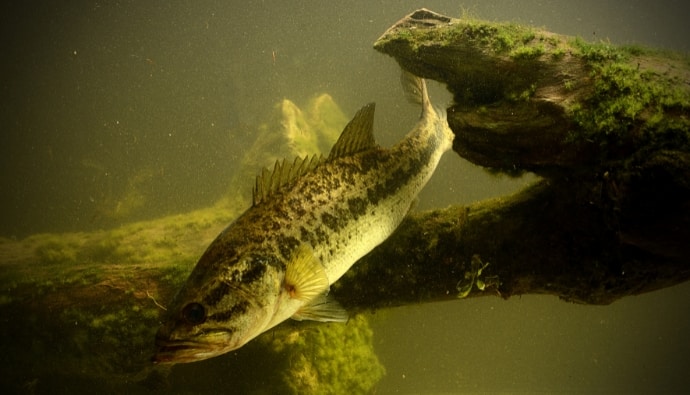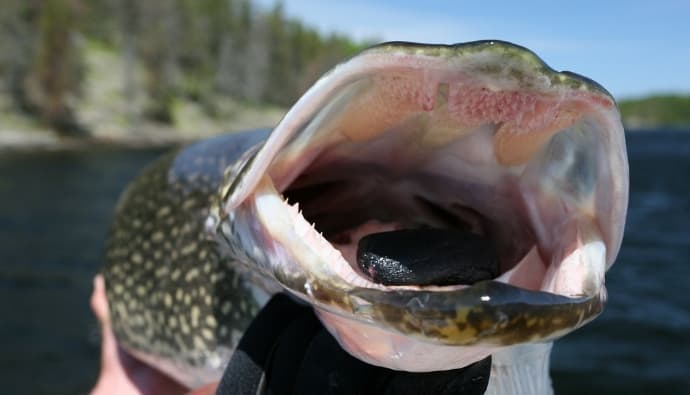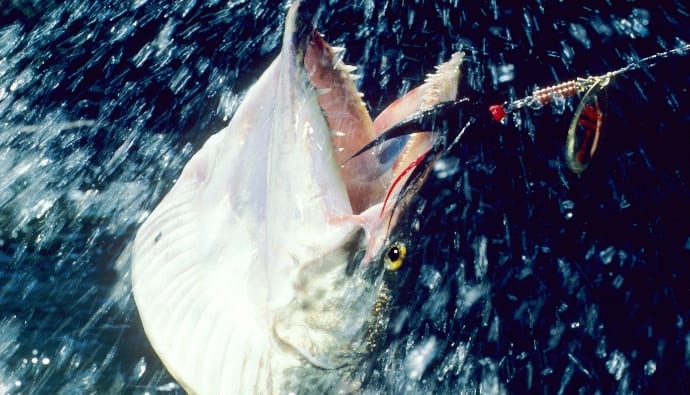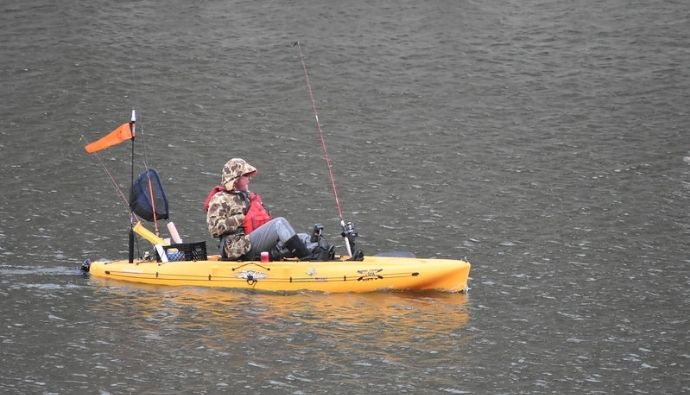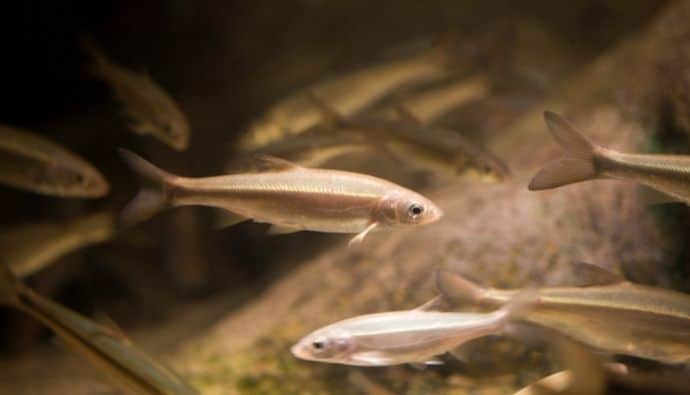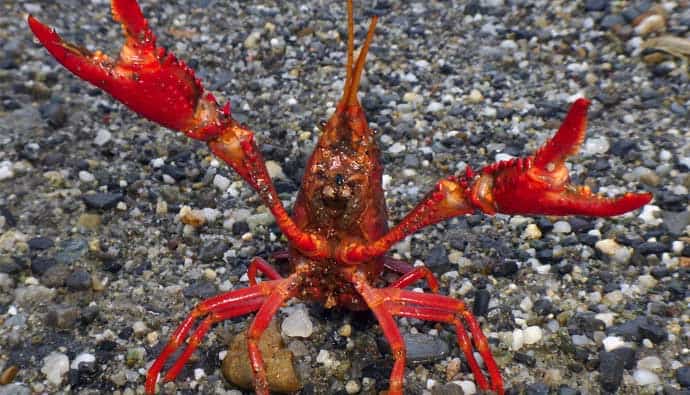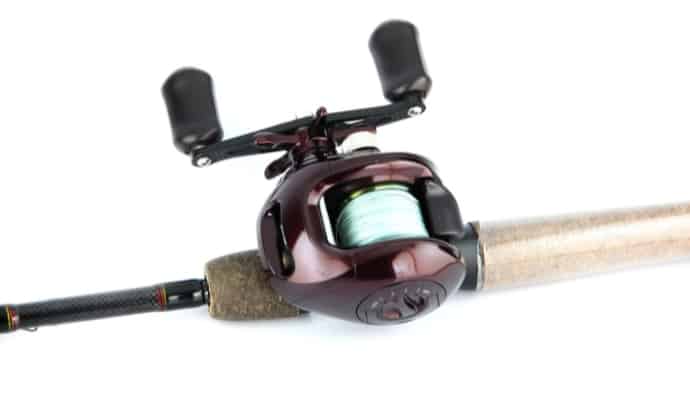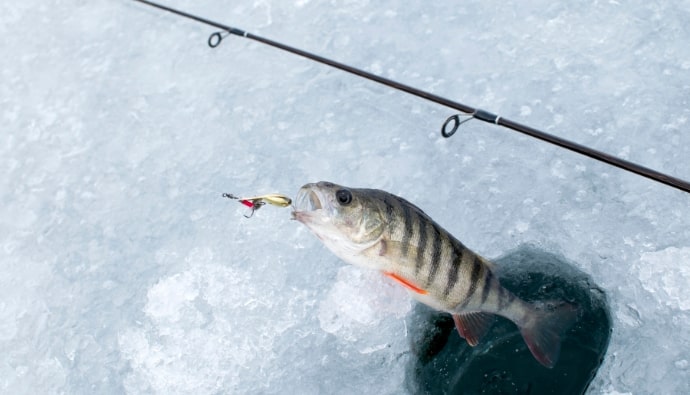Fly fishing is the best way to catch milkfish. These species are fierce fighters, so use a 9 to 12-weight rod and a saltwater reel. The reel should be smooth, offer reliable drag, a floating tropical line, and a 20-lb tapered leader. To increase the chances of catching milkfish, use bait, a fishing roe and ensure the fly is at the exact feeding spot. Your fly should also be able to drift and float in different water levels, so you should practice before fishing for milkfish. After catching milkfish, clean it by removing the shiny silvery scales first and then remove the gills and other entrails.
Milkfish are common in Asia and are used to prepare delicious meals, especially in the Philippines. Follow the tips below to help you catch, clean, and prepare milkfish.
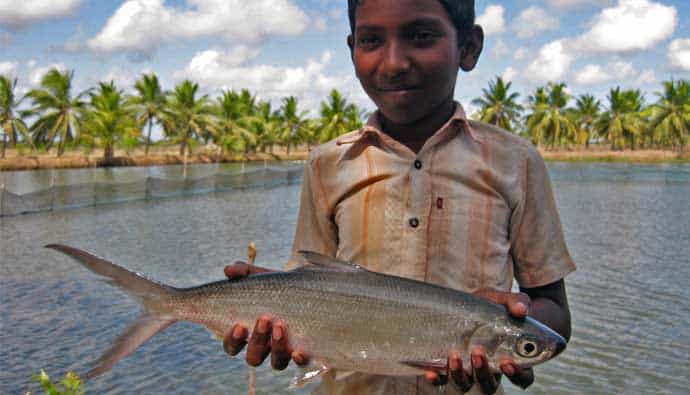
Recommended Fishing Gear:
- Fly Rod: TFO Lefty Kreh
- Fly Reel: Redington Reels Rise III
- Flies: Milky Dream, Wayne’s Milky Magic, or Olive Milky Dream
Overview: Milkfish Description and Characteristics
It’s awa in Hawaii, ava in Tahiti, and bangus in the Philippines, where it is also commonly known as the national fish.
You can find this fish in the Indian and the Pacific Ocean ranging from South Africa to Hawaii and the Marquesas, as well as all the way to the south of Australia.
Compared to other species, milkfish have an elongated body that is compressed and streamlined and which is olive green in color with silvery flanks and dark-bordered fins. The caudal fin is forked. It usually feeds on algae, small invertebrates, and autotrophs and tends to school around coasts, islands, and coral reefs.
These fishes lay several million eggs and spawn in saltwater. The young milkfish called fries then swim to waters where there are more zooplankton and eggs of other fish.
Milkfish Facts
| Scientific Name | Chanos chanos |
| Common Name(s) | Milkfish |
| Family | Chanidae |
| Genus | Chanos; Lacépède, 1803 |
| Species | C. chanos |
| Order | Gonorynchiformes |
| Identifying Characteristics | It’s a compressed and streamlined fish. It has a deeply forked tail and one dorsal fin. Its anal fin is a little curved. |
| Depth Range | 1 to 30 m |
| Habitat | It can be found in the Indian and Pacific Oceans ranging from South Africa to Hawaii and the Marquesas as well as all the way to the south of Australia. Some adult milkfish also live in freshwater lakes, especially in Madagascar, the Philippines, and Indonesia. |
| Limits | Check your local regulations |
| Diet | They eat algae and various invertebrates. |
| Largest Recorded | 45 lbs |
Where to Find Milkfish
Milkfish chanos chanos are endothermic fish and are cultured in fresh and marine brackish water but only in the tropical and subtropical Pacific and Indian oceans. The fish usually lives in tropical offshore marine waters around islands and continental shelves but have also been known to enter rivers and estuaries. In open water, the fish is easy to spot.
They are commonly farmed in their native range. In fact, they are one of the most important farmed fish species for human consumption in the world. The fry is raised in brackish ponds, sea cages, concrete tanks, or saline ponds.
You can also find them in small pods in waist-deep water right over algae patches with their tails out of the water as they feed on the bottom.
How to Catch Milkfish

The awa awa fish or milkfish is popular for being a fierce fighter that does not tire at all. That’s because, remarkably, it does not build up lactic acid in its muscles, so be prepared for a struggle that can stretch for hours.
The best way to catch them is via fly fishing which should involve a 9 or 12-weight rod that can give you sufficient pulling power and quick presentation. Accompany it with a matching saltwater reel that has smooth, reliable drag, sufficient backing, a floating tropical line, and a 20 lbs tapered leader.
Since milkfish are not predatory, the fly you use will not represent anything that would make them give chase. The determination of your choice of fly is not by the area but by the behavior of the bangus while they feed.
Fishing Tactics
- The best bait to use for the non-predatory milkfish is a bait and fish roe. Make sure that the fishing hook is tied to a short fishing leader that is not more than 6” and a small float.
- Make sure that you get the fly to the exact feeding spot, or the milkfish will ignore it. If this fails, cast again till you get it right.
Fishing Tips
- The fly you use should be able to float and drift in different levels of the water to attract milkfish that swim subsurface.
- Practice casting before your milkfish fishing trip because you will need to be accurate when you are out on the water. Otherwise, you will spend more time casting and less time fishing.
Seasons
Bangus or milkfish chanos chanos are present year-round because it spawns more than once a year. It breeds near clean, clear, warm, and shallow waters over sand and corals. They’re usually found in the Pacific and Indian oceans. Spawning is seasonal and dependent on the lunar cycle.
How to Clean
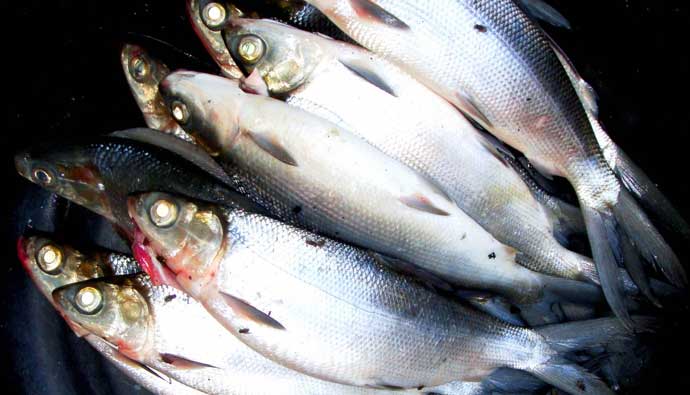
- Remove the shiny silvery scales from the milkfish using a descaler or scraping the scales against the grain with a chef’s knife.
- Snip the skin under the head of the fish with kitchen scissors to expose the gills and pull it out.
- Separate the guts from the stomach of the fish using your forefinger and middle finger and pull it out.
- Rinse out the cavity with water and then hold the fish from both ends and pull it to loosen up the body.
- Break the tail bone partially and pound the body with a wrapped rolling pin to loosen the meat inside.
- Snip off the bone below the shoulders to stabilize the head, and use the flat side of a butter knife to remove the meat from the skin. Start from the middle and go side to side on both sides. Leave the rib bone to ensure the cavity doesn’t tear.
- Grab the main bone with paper towels and pull out the meat. Scrape out leftover meat with a spoon.
How to Cook Milkfish
Milkfish is common in Asian recipes because of its mild taste and tender meat. It’s an important food supply for in different parts of the world, especially in Southeast Asia and some Pacific Islands. The most popular recipes include topping for congee, pan-fried, braised, and fish balls. If you plan on cooking milkfish, here’s a recipe you can use.
Milkfish Recipe
- Preheat your oven to about 300°.
- Take a baking dish, place a piece of foil in it, dab it with some butter, and place the milkfish in it.
- Use a brush to apply ¼ cup of lemon juice to the fish and season with salt and pepper before dabbing with some butter.
- Sprinkle grated cheese on the fish generously and pop the dish in the preheated oven.
- Bake for 5 to 10 minutes till the fish is cooked through.
- Serve with some paprika sprinkled on top.
Frequently Asked Questions
Yes. It’s a common dish to eat in the Philippines. It’s often used for making fish cakes and fish balls.
Milkfish is called bangus or sometimes bangos. It’s the main aquaculture by-product in the area. It’s the second most popular seafood dish for Filipinos.
7 to 12 years.
This fish is primarily in saltwater but can also be found in freshwater. However, they can only breed in saltwater.
Insider Advice
Milkfish chanos chanos can be a bit difficult to fillet, but it more than makes up for that with its taste and the excellent sport fishing it offers.




 Facebook
Facebook YouTube
YouTube